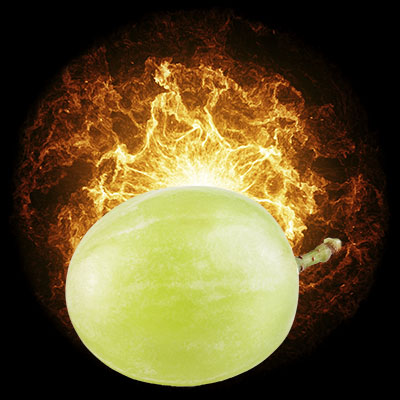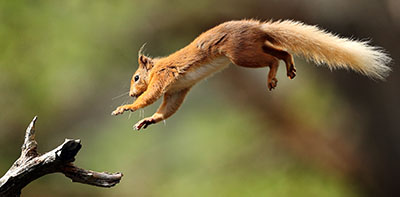We Love Pi! And Science! And Pie! Happy Pi Day!
By ETR | March 14, 2019
Here at ETR, we are crazy for science. In fact, science is deeply engrained in our organizational values, which proudly proclaim that “Science is Foundational” to all the work we do.
You can imagine how excited we get about Pi Day—a day to reflect on the power, wonder and promise of science. Last year in our Pi Day post, our team talked about some of the reasons we celebrate science. This year, we’re sharing up some thought-provoking bits of scientific research that we just think are mighty cool.
Oh, and we also like animals, so you’ll find a bit of an animal theme in our musings.
Who Needs Night Vision? Get a Dog!
 How well do dogs see at night? Really really super well. We humans do best in the light of day, but for dogs, darkness stirs and wakes imagination. In fact, dogs can see in light five times dimmer than what humans can handle.
How well do dogs see at night? Really really super well. We humans do best in the light of day, but for dogs, darkness stirs and wakes imagination. In fact, dogs can see in light five times dimmer than what humans can handle.
How do dogs do it? Large pupils. Retinas with lots of light-sensitive cells. Compounds that respond better to lower light levels. But the biggest advantage is something called the “tapetum.” Like a mirror in the back of the eye, it reflects light back to the retina to improve night vision. It also gives dogs’ eyes that “glow-in-the-dark” look.
Thanks, Matt McDowell, Director of Product Development and Dissemination, for pointing out yet another fine virtue of our canine companions.
Microwaving Grapes (Safety Caution!)
 Research Associate Emily Green tells us, “I used to teach a waves unit and on 'microwave day,’ we would do a lot of fun experiments. It was never understood then why grapes were so volatile (great theories, but never a systematic inquiry) until now!” But yes, when you slice a grape just the right way and throw it in the microwave for five seconds, you will see a glorious fireball.
Research Associate Emily Green tells us, “I used to teach a waves unit and on 'microwave day,’ we would do a lot of fun experiments. It was never understood then why grapes were so volatile (great theories, but never a systematic inquiry) until now!” But yes, when you slice a grape just the right way and throw it in the microwave for five seconds, you will see a glorious fireball.
It turns out the grape is a perfect size for amplifying microwaves. The waves resonate within the grape, kind of like vibrations in a bugle. Be warned, however, that these experiments have been known to melt microwave ovens. Proceed with caution.
Get Out the UV Lights and Glow, Rocky!
 Did you know that some species of flying squirrels glow pink under UV light? Research Associate Mia Barrett suggests we all remember to invite flying squirrels to our next rave.
Did you know that some species of flying squirrels glow pink under UV light? Research Associate Mia Barrett suggests we all remember to invite flying squirrels to our next rave.
And if you’re not clear about the “Rocky” reference, check it out here.
It Was Uh, Uh, Uh, a Disfluency
 When do you insert a handy disfluency into your speech? (Disfluencies: breaks, irregularities or non-meaningful sounds that occur during otherwise smooth speech, such as “um,” “uh,” “well,” “er.”) Chances are you use them more frequently before uncommon words. You’re more likely, for example, to say, “she’s quite, uh…peripatetic” vs. “she’s quite the traveler.”
When do you insert a handy disfluency into your speech? (Disfluencies: breaks, irregularities or non-meaningful sounds that occur during otherwise smooth speech, such as “um,” “uh,” “well,” “er.”) Chances are you use them more frequently before uncommon words. You’re more likely, for example, to say, “she’s quite, uh…peripatetic” vs. “she’s quite the traveler.”
Your listeners notice! If your speech pattern is generally typical, listeners will be primed to hear a less common word after a disfluency. If your speech is less typical—say you’re speaking a non-native language—listeners will figure out that your disfluencies just mean you’re working on translation. They won’t take this as a cue to look for an uncommon word.
Thanks to Senior Research Scientist Pamela Drake for sharing this “hot topic in psycholinguistics.”
Chimps Are My Bio Cousins, but I’d Rather Hang Out with My Dog
 Emily Green also offered this story about a Bio Anthropology discussion with visiting lecturer Dr. Brian Hare. “When Dr. Hare presented on his theory of chimps vs. dogs,” she tells us, “he acknowledged chimps as our closest biological relatives. But they still can’t do a lot of the things that humans can do. And dogs can do some of those things. So he theorized that we could use chimps as a proxy for biological evolution, while dogs could be the proxy for cultural evolution.”
Emily Green also offered this story about a Bio Anthropology discussion with visiting lecturer Dr. Brian Hare. “When Dr. Hare presented on his theory of chimps vs. dogs,” she tells us, “he acknowledged chimps as our closest biological relatives. But they still can’t do a lot of the things that humans can do. And dogs can do some of those things. So he theorized that we could use chimps as a proxy for biological evolution, while dogs could be the proxy for cultural evolution.”
Here’s an example. Point with your finger, and a chimp (and most other animals) will stare at your finger. But humans and dogs understand you are triangulating to a third point (“get the ball”).
Here’s Dr. Hare’s take on who gets the credit for socializing dogs (hint: it’s not humans), and an article describing some of the similarities in social intelligence between dogs and toddlers.
Pi. Pie. It’s Scientific.
We like to celebrate Pi Day with pie, of course. But wait! We don’t need to abandon our passion for science just because we are indulging our passion for pie. Instead, we can close our eyes, taste the sublime, and meditate on the importance of phase transitions in creating the perfect pie crust. With gratitude to UCLA biophysicist Amy Rowat, who explains it all here in her fabulous video.
What’s Your Pi Day Science Favorite?
Got a fun science fact or some amazing research that you just can’t help but think about on this wondrous day? We’d love to hear about it in the comments.
Happy Pi Day!





